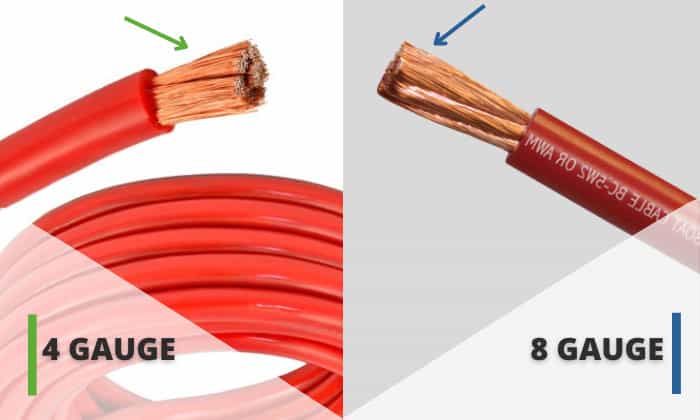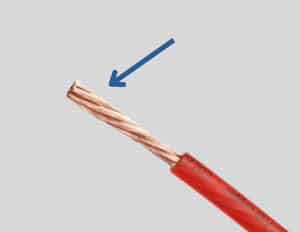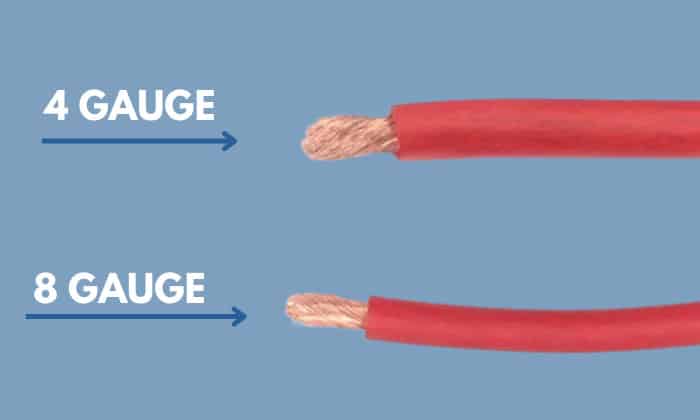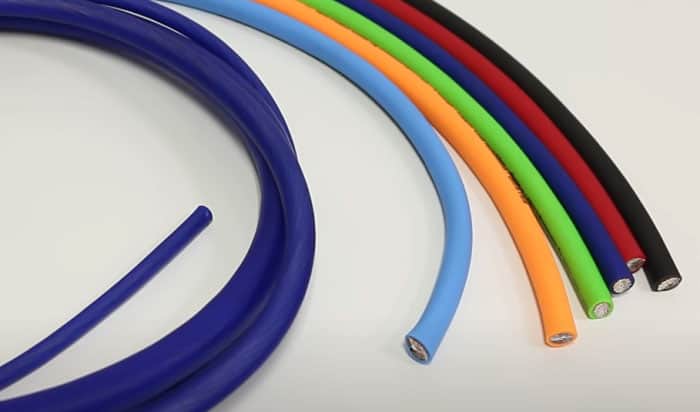Different wire sizes are used in various applications that require certain load ratings. As a result, understanding the distinctions between wire sizes is quite important, particularly to avoid electrical faults and fires.
The difference between 4 gauge vs 8 gauge is an example of this. Due to their capacities, you may not be able to utilize the two interchangeably.
If you want to learn more about these wire sizes, get into more details as you read this article all the way through.
Table of Contents
8 Gauge Vs 4 Gauge
Wires are typically responsible for allowing a device to run safely and at peak performance. For example, when setting up your car audio, you must be specific regarding your wire amp kit.
Most low to medium power amplifiers utilize two wire thicknesses for their power input. Depending on the amp’s rating, these wires can be either 8 or 4 gauge. In this scenario, let’s go through these wire sizes in greater detail below.
8 Gauge Wire
The 8 guage wire diameter is 3.264 mm or about 0.12 inch and is suitable for powering low-powered electronics. It is best to use on a 40 amp circuit in most cases. However, depending on the circuit voltage rating, it may be able to handle a wide range of device wattages from 480 to 9,600W.
When used in a 12V circuit, 8 gauge copper can handle an average of 480 watts, but in a 24V circuit, it can hold 960 watts. This means that an 8 gauge power wire for amp with an RMS rating of 500 watts is best to deliver the latter’s potential sound quality.
- It is significantly less expensive than a 4 gauge wire
- Has greater resistance than a 4 gauge wire
- 8 gauge wire handle small electronics only
4 Gauge Wire
If you’re wondering how big is 4 gauge wire, it has a diameter of 5.189 mm or about 0.20 inches. This is usually sufficient for a circuit rated at 68 amps on average. It also holds various device wattages (up to 16,320W) depending on the circuit voltage rating, just like an 8 gauge wire.
The 4 gauge wire handle an average of 816 watts in a 12V circuit and 1,632 watts in a 24V circuit. This wire may be suitable for an amp rated at 1000 watts RMS. It will also support the unit in releasing its full sound quality.
- Excellent for handling large devices
- Offers lower resistance and a lower percentage of voltage drop
- More expensive than an 8 gauge wire
Differences
In general, aside from the difference in diameter, 8 gauge and 4 gauge don’t carry the same load. For instance, the size of 8 gauge wire can hold 35 amps at 19 feet, but to transfer the same load at 22 feet, a 4 gauge cord is better.
Moreover, 4 gauge is more common in jumper cables. 8 gauge is often too small to boost a dead battery.
Note: The diameter may change a bit depending on the type of wire you use. A solid wire is smaller than stranded wires. You may find online an actual size wire gauge chart showing 4 gauge with sizes of 5.190 or 6.720 mm (solid for the former number and stranded for the latter).
Frequently Asked Questions
What is Better 8 Gauge or 4 Gauge?
Using a larger size of wire is always preferable, since it offers less resistance than a smaller one. In this case, a 4 gauge wire bigger than 8 gauge wires will result in lower voltage drops.
This will provide your electronics with a good power supply and is really beneficial, especially if you intend to upgrade your device in the future.
How Many Watts is 4 Gauge Wire Good For?
As stated above, the wattage rating of a wire depends on the circuit. If you use it to power your car audio, it is suitable for medium-sized amps or those with a total RMS rating of up to 1000 watts.
What Size of Wire Handle 2000 Watts Amp?
The answer to this question depends on the length of the wire. Normally, you can find 4 gauge cables that hold up to 150 amps. However, this wire should be in 4 ft applications for 2000 watts class AB amp under 50% efficiency.
In this case, if you need a wire for more than 10 ft using the same amp rating, you can use a wire gauge of 1/0 or 2/0.
How Many Amps Does an 8 Gauge Speaker Wire Handle?
An 8 gauge wire can support loads of up to 40 amps. However, this size is a little too large for a standard amplifier setup.
Typically, a 16 to 12 gauge wire is sufficient to hook up your speaker to the amplifier. When the connection length required in your application is too long, then it makes sense to use a much larger wire gauge.
What Gauge Wire For 8,000 Watt Amp is Best?
Most of the time, a larger size amp may require a dual power wire connection. An example is the Taramps 8000 watts class D amp requiring two 2/0 gauge wires for a 2 ohm load.
Conclusion
It is easy to spot the distinctions between 4 gauge vs 8 gauge wires. By looking at their size, you can tell that they have a difference in the load they carry.
However, while a larger wire is recommended in many applications, it is not always required.
If you are having difficulty identifying the cable you need for your application, it is always a smart idea to speak with a professional to avoid costly damage caused by using the improper wire size.
Read next:

I am Edwin Jones, in charge of designing content for Galvinpower. I aspire to use my experiences in marketing to create reliable and necessary information to help our readers. It has been fun to work with Andrew and apply his incredible knowledge to our content.





